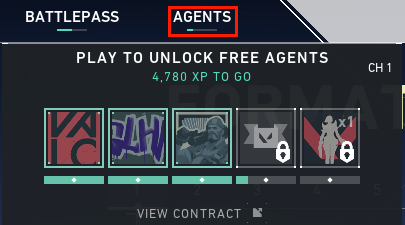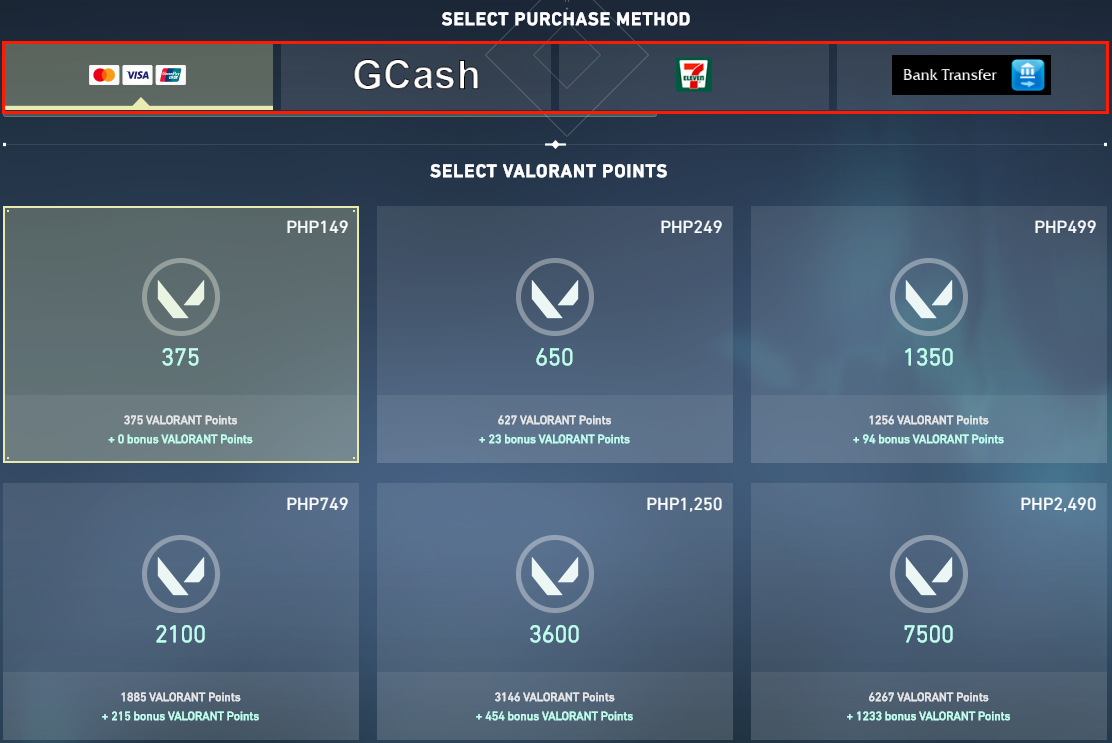Everybody uses the same weapons in Valorant, but that doesn’t mean that every weapon needs to look the same. After all, you’re going to spend a lot of time looking at your weapon, so it might as well be enjoyable to look at.
Fortunately, the folks at Riot have the perfect solution for players who need to look their best while gunning down enemies. Skins are cosmetic add-ons that can change the physical appearance of a weapon, as well as animation and audio effects.
Keep reading to find out where to get these unique looks and whether you’ll have to play or pay to unlock the customizations.
How to Get Skins in Valorant?
Unlike other popular multi-shooter games, Valorant doesn’t have special skins to change and customize Agent appearance, at least for now. What they do offer is a collection of skins that can modify and enhance the way that weapons look and feel while playing the game.
They don’t necessarily enhance your gameplay, but sometimes looking good is all it takes to win a match, right?
There are a few ways to get a hold of unlocked skins:
1. Spending Real-World Money
This may be the simplest way to get your hands on that weapon skin you want but don’t have the time to unlock. Valorant Points, or VP is the premium currency used in the game to unlock Agents, skins, and more from the in-game store.
Here’s an example of real-world money conversion to VP on the North America server:
- $4.99 – 475 VP, no bonus VP, 475 VP total
- $9.99 – 950 VP, 50 bonus VP, 1000 VP total
- $19.99 – 1900 VP, 150 bonus VP, 2050 total
- $34.99 – 3325 VP, 325 bonus VP, 3650 total
- $49.99 – 4750 VP, 600 bonus VP, 5350 total
- $99.99 – 9500 VP, 1500 bonus VP, 11000 total
As a frame of reference, the Valorant Store Featured Collections are around 7,100 VP. Individual weapon skins are a little less expensive and generally range between 1,775 VP to 4,350 VP each, with melee weapon skins on the higher end of the price scale.
Before you start searching for weapon skins, you should know that featured bundles change every couple of weeks and individual skin offerings change every 24 hours, so what you see today may not be what you see tomorrow.
2. Complete Agent Contracts
If you’re looking to unlock as many Agents as possible, you’re probably already making individual Agent contracts. Completing these contracts does more than unlock Agents, though. Getting to Tier 10 in Chapter 2 can also yield a modest collection of agent-specific weapon skins, and best of all, they’re free!

The problem that many players run into is the seemingly insurmountable XP requirement to level through Tier 10. If you’re just counting Tier Six upwards, you’re looking at 625,000 XP to unlock these skins. Another added problem is that you can’t buy your way out of it as you can for Chapter 1.
However, if you’re willing to put in the time, these free skin customizations may just be worth it.
3. Complete Tiers in a Battle Pass
As always, Valorant adds a free track and a paid premium track for all their Battle Passes. If you’re a little cash-shy, you can still earn skins by working your way through Battle Pass Tiers, but if you want the full scope of rewards, you may have to open your wallet. Battle Pass Premium goes for around $10 or 1,000 VP for access to the full cycle of rewards.

A Word About Radianite Points
Radianite Points (RP) is an in-game currency often obtained by completing Battle Pass Tiers and Contracts. You can also buy RP with Valorant Points. While you can’t unlock a weapon skin with RP, you can evolve unlocked skins to a new variant – finisher – and even weapon animation using this currency.
How to Get Skins for Free in Valorant?
There are a couple of ways to get a hold of free skins in Valorant. The first is to complete Agent contracts through Chapter 2. These skins are Agent-specific if you can get through Tier 10 of the individual Agent’s contract.
The second way to get skins is to go the “free route” when playing a Valorant Battle Pass. You may not have access to all the rewards that premium players get, but you do get quite a few free goodies for advancing through the Tiers.
How to Buy Skins in Valorant?
Buying skins is one of the primary ways that players get weapon skins. If you’re ready to buy, check out the steps below:
- Launch the game.
- Go to the Store tab.

- Browse the latest offerings.

- Click on the skin you want to purchase.

- Follow the prompts to complete your transaction.

Keep in mind that you should have a VP balance before going into the store. If you need to top-up or buy Points the first time, here’s how you do it:
- Go to the in-game home screen.
- Click the tiny stylized V or Valorant logo. If you have a VP or RP balance, you’ll see each one respectively in this section of the header.

- Choose your payment method.

- Choose the VP bundle you wish to purchase.

- Follow the prompts to complete the transaction.

Generally, the store has one special collection featured as well as a selection of individual skins. Also, store stock rotates the four individual weapon skins every 24 hours. So, check back in a few days if you don’t see the skin you’re looking for, as these skins are picked at random. You never know what they’ll offer next.
How to Buy Skins Not in Store in Valorant?
Weapon skin collections are only available for a limited time in stores, and once they’re gone, they’re gone for good. Well, for the most part.
The developers at Riot say that they don’t have any plans of bringing back old bundles as Featured Collections in the store, but you may be able to catch individual weapon skins from the same collection offered without the bundle pricing. The problem is that individual weapon skins are picked at random, so you never really know when the one you’re looking for will show up in the store.
If you’re looking for skins offered as rewards for previous Battle Passes, you may be out of luck. Riot may release a new version of a popular skin collection in the future as they did with the Prism Collection, but you won’t be able to find the original collection outside of the rotating stock in the Valorant store.
How to Get Knife Skins in Valorant?
Melee weapon skins are sometimes available as a Battle Pass reward for reaching a certain Tier. For example, Episode 1, Act 1 released the following skin collections:
- Kingdom

- Couture

- Dot Exe

Of the three skin collections, only Kingdom offered a melee weapon skin to players who reached Tier 50 of Act 1.
If you miss out on the occasional melee weapon skin offered in Battle Passes, you can always go to the in-game store. Just remember that skin collections don’t always offer a melee weapon skin. Before you buy that pricey bundle, do your research to make sure that it includes the skin you want for your weapon.
Otherwise, you’ll have to wait for the individual rotating weapon skin slots. They’re located in the lower section of the store. These weapon skins are chosen at random, so you may find one immediately, or you may have to check back in a day or so.
How to Get Prime Skins in Valorant?
The Prime Collection was one of Valorant’s first featured bundles and was released in June of 2020. Unfortunately, if you didn’t buy the bundle from the store when the game first launched, you won’t be able to get it anywhere else.
However, Riot announced the release of the Prime 2.0 Collection along with a Battle Pass Act 2, Episode 2, slated to launch at the beginning of March of 2021. The collection will rotate into the in-game store at 7 100 VP and feature skins for the following weapons:
- Odin

- Bucky

- Frenzy

- Melee Knife

All of the weapon skins, except for the melee weapon, have four variants and four levels that you can attain with Radianite Points.
New Skins in Episode 3 Act II
For those of you looking for details on the latest skins in Episode 3, Act 2, here’s a quick rundown.
- Porcelain: Available for the Ghost, Bucky, Phantom, and Marshal
- Walnut: Available for the Judge, Stinger, Bulldog, and the Sheriff.
- Electroflux: Available for the Odin, Vandal, Guardian, and Operator.
Valorant also just released a new line of Zedd skins in collaboration with DJ Zedd.
Skins in Episode 4 Act I
On January 12, 2022, Episode 4 Act I was released; here’s a quick overview of the newly available skins.
- Hydrodip: Available for the Bucky, Frenzy, Guardian, and Judge.

- Schema: Available for the Odin, Sheriff, Stinger, and Vandal.

- Velocity: Available for the Bulldog, Karambit, Phantom, Shorty, and Spectre.

How to Get Prism Skins in Valorant?
The original Prism Collection and the revamped Prism II Collection took the Valorant community by storm. Nowadays, you’ll have to try your luck on the rotating selection offered in the store to get your hands on these skins.
Alternatively, if you’re playing the Episode 3, Act 2 Battle Pass, you may receive a Prism III pistol skin for free. While you don’t have access to an entire collection for the new Prism III skin, you will have access to all the variants this skin has to offer.
Additional FAQs
Will Valorant Skins Carry Over?
Skins purchased during Valorant’s beta stage did not carry over with the game’s official full launch. However, players who bought skins during that time received a refund in the form of Valorant Points with an extra 20% added for their support of the game.
How Do You Unlock Skins in Valorant?
The simplest way to unlock skins is to play the game. Complete Agent contracts for character-specific weapon skins and Battle Passes for limited-release weapon skins. If you’re willing to spend the money, you can also buy skins in the Valorant store.
Give Your Weapon a Makeover
Sometimes all you need is a visual pick-me-up to inspire you to win those matches. So, the next time you feel you need a weapon makeover, head over to the Valorant store and pick your next look. Just remember that weapon skins often rotate in the store, so if you see one you want, act quickly. You never know when it’s going to rotate back in.
Do you buy weapon skins or earn them for free? Let us know in the comments section below.
Disclaimer: Some pages on this site may include an affiliate link. This does not effect our editorial in any way.























